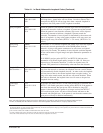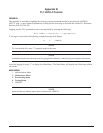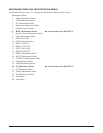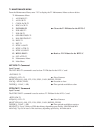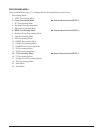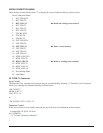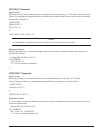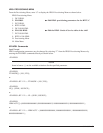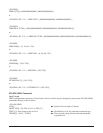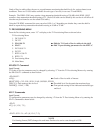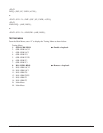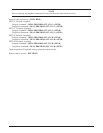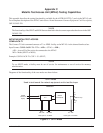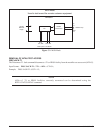
B-10 61221002L2-5B
Grade of Service tables allow the user to set performance monitoring threshold levels for various alarms/event
conditions. There are 15 GOS tables available for each type of service (in our case T1 and HDSL).
Example: The HDSL GOS1 may contain a loop attenuation threshold setting of 30 (dB) while HDSL GOS2
contains a loop attenuation threshold setting of 25. (Each GOS table can be edited by the user but it will affect all
slots that are provisioned to use the edited GOS table.)
Using the ED-HDSL command, the user can select GOS=1 or 2 depending on whether they want the shelf to
alarm or report the loop attenuation threshold crossing at 30 dB or 25 dB.
T1 PROVISIONING MENU
From the Provisioning menu, enter “15” to display to the T1 Provisioning Menu as shown below.
T1 Provisioning Menu
1. DLT-GOS-T1
2. DLT-T1
3. ED-GOS-T1
←←
←←
← Edit the T1 Grade of Service tables in the shelf
4. ED-T1
←←
←←
← Edit T1 provisioning parameters for the H2TU-C
5. ENT-GOS-T1
6. ENT-T1
7. RTRV-GOS-T1
8. RTRV-T1
B. Provisioning Menu
M. Main Menu
ED-GOS-T1 Command
Input Format
T1 Grade of Service parameters may be changed by selecting “3” from the T1 Provisioning Menu or by entering
the ED-GOS-T1 command as shown below.
<ED-GOS-T1
AID[]=
←←
←←
← Grade of Service table of interest
MONTYPE[]= CVL, ESL, SESL, UASL, B8ZSSL, PDVSL
THLEV[]= Each montype has its level
←←
←←
← Threshold level for the particular monitered type
TMPER[]= 1-DAY, 1-HR,
←←
←←
← Time periods setting for the indicated monitered type
and level
ED-T1 Commands
Input Format
T1 configuration parameters may be changed by selecting “4” from the T1 Provisioning Menu or by entering the
ED-T1 command as shown below.
<ED-T1
AT[]={0 | 15.0 | 7.5};
or
<ED-T1::RT-1-21::::AT={0 | 15.0 | 7.5};
NOTE
For framing format (FMT) changes the card must first have its service state changed to OOS.



